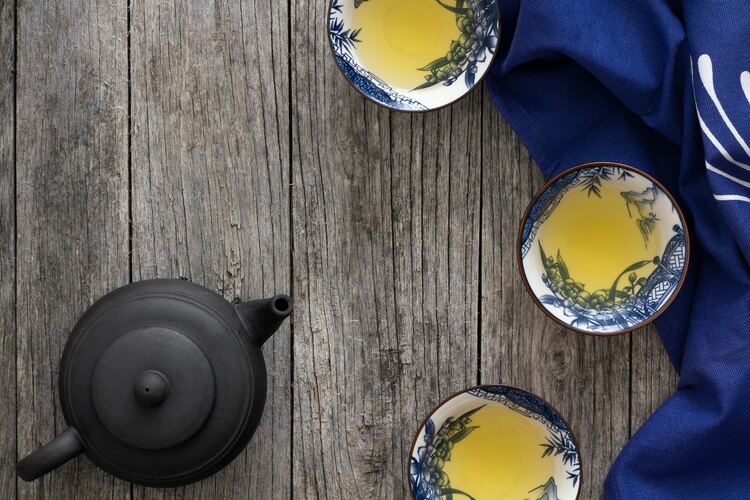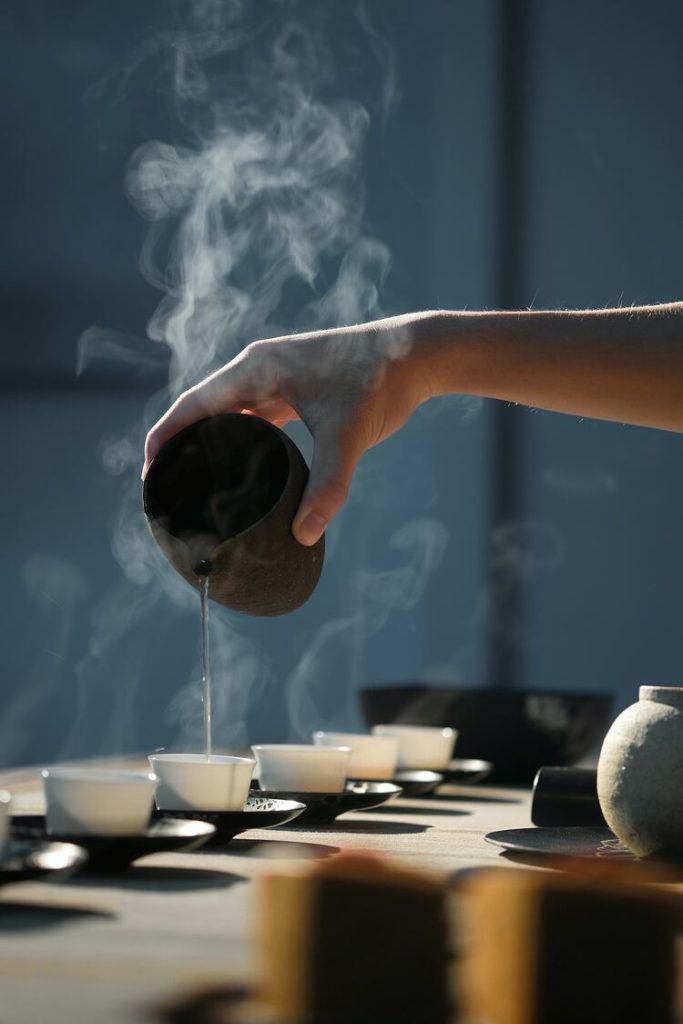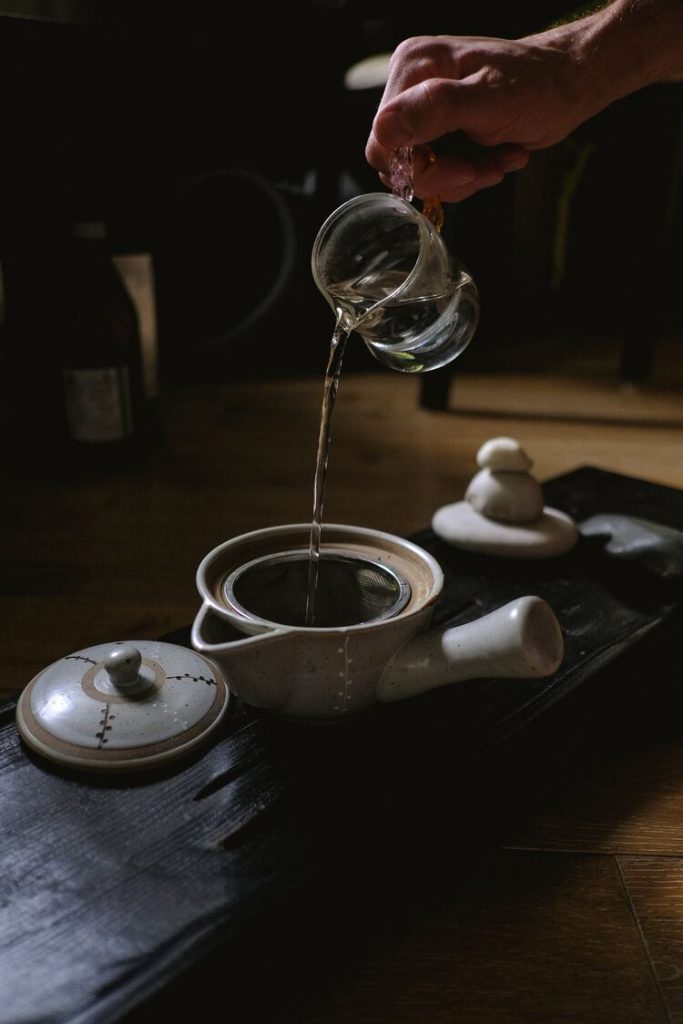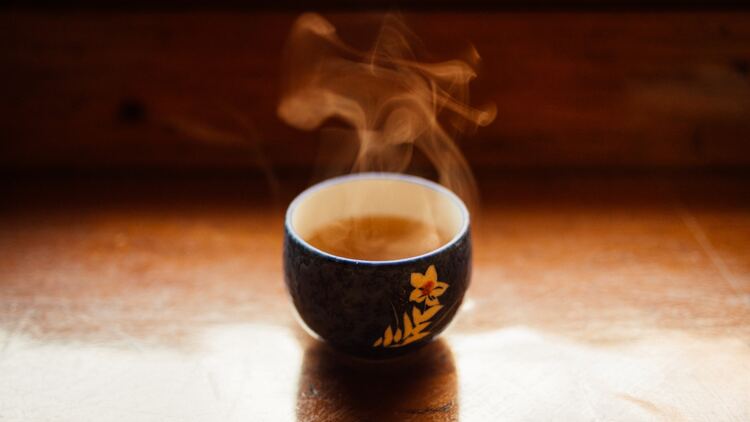In this article, we will discuss what is Bancha tea, including its processing, variations, health benefits and ideal food pairings.
Bancha tea has been an essential part of Japanese tea culture for centuries. As tea enthusiasts ourselves, we can’t wait to share with you the charm and benefits of this delicious beverage, which has captivated the hearts of millions around the world.
For many, Bancha tea is a daily delight that offers a refreshing and comforting experience. This unique, traditional tea is usually harvested from the later flushes (I’ll get into details in a second) of the Camellia sinensis plant, which gives it a distinct flavor profile that’s quite different from its more well-known counterpart, Sencha.
When it comes to taste and aroma, Bancha is generally more robust, earthy, and astringent, reflecting the maturity of the leaves used in its production.
In exploring the fascinating world of Bancha tea, we will discuss its origin, production process, and the health benefits it offers. So, get ready to understand and appreciate this lesser-known Japanese treasure, and perhaps you’ll be inspired to add Bancha to your tea collection.
Please note: This article contains affiliate links, meaning I may earn a commission if you make a purchase by clicking a link. Of course, this comes at no extra cost to you and helps me to keep offering solid information to readers.

What is Bancha Tea?
Bancha is a type of Japanese green tea that is less known in the Western world compared to more popular types such as Sencha or Matcha. However, its milder taste and lower caffeine content make it an ideal daily beverage for many tea enthusiasts. Let’s look deeply at its origin, production, and varieties.
Origin and Production
Bancha tea holds deep roots in Japanese culture and has been consumed for centuries. Its name can be translated to “common” or “ordinary” tea as it was considered an everyday drink for the general population.
The tea leaves used in Bancha production are harvested later than those used for Sencha (the leaves used for Sencha are the ones picked first during the harvest season; this is called first flushing), typically during the second, third, or even fourth flushes of the season (this refers to the second, third or fourth time the tea plant is plucked). This later harvest gives Bancha its distinct characteristics.
After the leaves are harvested, they undergo a series of processes, including steaming, rolling, and drying.
Note the word “steaming” has been bolded in the paragraph above. This is because steaming tea leaves is one of the key elements that make the processing in Japan different from other tea-producing areas worldwide.
Keep in mind green tea is not oxidized. When tea leaves are picked, they start to turn dark since a chemical process where chlorophyll is broken down is triggered. This oxidation process can be stopped by applying heat.
In Japan, the heat is applied through steaming. Other tea-producing areas, like China, apply heat through pan-firing. That is why the green tea leaves produced in Japan tend to have a vivid green color.
While Bancha’s overall processing is similar to Sencha’s, there is a difference in the steaming duration. Bancha leaves are usually steamed for a longer period before being rolled, which contributes to its milder flavor and lower caffeine content.
Varieties
Within the realm of Bancha tea, several notable varieties offer unique flavor profiles and brewing experiences. Some of these include:
- Hōjicha: This type of Bancha tea is made by roasting the leaves, which imparts a toasty, smoky flavor. The roasting process reduces the caffeine content, making Hōjicha a popular choice for evening consumption.
- Genmaicha: A blend of Bancha leaves and roasted brown rice, Genmaicha has a distinct nutty flavor and aroma. The inclusion of rice makes this variety more filling and satisfying to drink.
- Kyobancha: Originating from Kyoto, Kyobancha is made from large, coarse leaves harvested in early spring. After steaming, the leaves are roasted to create a unique, earthy flavor profile.
These are just a few examples of the many varieties of Bancha tea available. Each offers a subtly different taste, allowing you to explore and find the perfect Bancha for your palate.

How to Brew Bancha Tea
We are glad to guide you through making a perfect cup of Bancha tea. To ensure the best quality and flavor, you must focus on three key factors: water temperature, steeping time, and tea-to-water ratio.
Water Temperature
Choosing the right water temperature is essential as it directly impacts the taste of your tea. For Bancha, we recommend a slightly lower temperature than other green teas. Here are the water temperature guidelines:
- 80°C (176°F) – Delicate flavor, light and refreshing.
- 85°C (185°F) – Richer flavor, slightly more astringent.
To achieve this temperature, you can either use a kettle with adjustable temperature settings or a cooking thermometer, or you can simply pour boiling water into a separate container to cool slightly before using it to brew your tea.
Steeping Time
Getting the right steeping time is crucial for balanced flavors. Over-steeped Bancha may taste bitter, and under-steeped tea may lack depth. Here’s our recommendation for steeping times:
- 1 minute – Light, subtle notes and mild flavor
- 2 minutes – Balanced taste with a pleasant aroma
- 3 minutes – Stronger, full-bodied flavor with some astringency
Tea-to-Water Ratio
Lastly, the tea-to-water ratio plays a significant role in determining the strength and flavor profile of your Bancha tea. Here’s our suggestion for a standard 8-ounce (240 ml) cup:
- 1 teaspoon (2-3 grams) of Bancha tea leaves
- 8 ounces (240 ml) of water
Feel free to adjust the amount of tea leaves based on your personal preference. More leaves will yield a stronger flavor, and fewer leaves will result in a milder taste.
Health Benefits
Bancha has more to offer than just a delicious flavor; it also has numerous health benefits, which we’ll discuss in detail below.
Antioxidants
One of the most appreciated health benefits of Bancha tea is its rich content of antioxidants. These powerful compounds help protect our bodies from harmful free radicals, which can cause various health problems such as chronic disease and premature aging.
Bancha contains a high level of catechins, an antioxidant that specifically targets and neutralizes free radicals. By incorporating this tea into your daily routine, you’ll be supporting your body’s natural defense system, keeping you healthier and more resilient.
Digestion Aid
Another great benefit of Bancha tea is its ability to aid in digestion. In our experience, this tea can soothe an upset stomach and promote healthy digestion by minimizing bloating and discomfort.
Weight Management
Looking to shed a few pounds? Bancha tea might just be the perfect addition to your weight loss plan. One of the key components of this tea is its ability to boost metabolism, helping you burn calories more efficiently, and promote weight loss.
Bancha tea is low in calories, making it an excellent choice for a guilt-free beverage. Replacing high-calorie drinks with Bancha tea could be a simple and effective way to kick-start your weight loss journey.

Pairing Bancha Tea with Food
We love Bancha tea for its mild and refreshing taste, making it an ideal companion for various types of food. Food pairing can enhance the flavors of the tea and the dish, creating a delightful dining experience.
First and foremost, Bancha tea pairs exceedingly well with Japanese cuisine. The tea’s mild, earthy flavor has the ability to cut through heavier foods. When enjoying a meal with Bancha tea, we usually find that:
- Sushi: The subtle taste of the tea complements the delicate flavors of the seafood and rice.
- Tempura: Bancha tea can cleanse the palate between bites of crunchy, fried vegetables and seafood.
- Grilled fish: The tea helps balance the rich taste of grilled or roasted fish dishes.
Despite its strong association with Japanese cuisine, Bancha tea also pairs delightfully with lighter Western dishes. Its refreshing taste has an affinity for:
- Salad: Bancha tea accentuates the freshness of green salads and balances mildly sweet or tangy dressings.
- Sandwiches: The tea’s mild flavor complements the cold cuts and doesn’t overpower the sandwich’s main ingredients.
Finally, Bancha tea can be enjoyed with sweet desserts. The tea offers a light, palate-cleansing effect when paired with:
- Fruit-based desserts: Bancha tea enhances the natural sweetness of fruits and creates a harmonious finish after a meal.
- Asian sweets: Light, delicate desserts like mochi and dorayaki are often served with Bancha tea in Japan, as the tea’s subtle flavor doesn’t compete with the dessert’s taste.
Storing Bancha Tea
When it comes to storing this tea (and others), it’s essential to ensure the tea leaves remain fresh and maintain their aroma. Therefore, pay particular attention to the tips below to keep your tea in optimal condition.
First and foremost, it’s crucial to store the tea in an airtight container. This will prevent the leaves from coming into contact with oxygen, which can diminish the flavor and quality of the tea. To further preserve the tea’s freshness, it’s also a good idea to store the container in a cool, dark place, preferably a pantry or cupboard.
Since the tea is sensitive to moisture, you should avoid storing the container near sources of humidity, such as a dishwasher or a sink. A cool, dry environment is ideal for preventing the tea from absorbing any unwanted moisture.
Make sure to keep the tea away from strong odors, as these can be absorbed by the leaves and negatively affect the taste of your tea. Additionally, it’s best to store your Bancha tea separately from other teas or aromatic substances.
In summary, proper storage of Bancha tea involves:
- Using an airtight container
- Storing the container in a cool, dark place
- Avoiding sources of humidity and strong odors
- Not storing the tea alongside other aromatic substances
Following these tips will allow you to enjoy its unique characteristics repeatedly.

Precautions and Side Effects
As with any tea, it’s essential to be aware of potential precautions and side effects that could arise from consuming Bancha tea. Let me assure you drinking Bancha tea is safe, but there are a few things to keep in mind.
Keep in mind that Bancha tea contains caffeine. While it has less caffeine than other types of green tea or black tea, individuals sensitive to caffeine or those with specific medical conditions should monitor their intake. Overconsumption of caffeine may lead to insomnia, increased heart rate, or jitteriness.
Pregnant and nursing women should also exercise caution when consuming Bancha tea (or any caffeinated drink). It’s best to consult your healthcare provider for personalized advice on tea consumption during this period.
Additionally, the tea may interact with certain medications. If you take any prescription or over-the-counter medications, especially blood thinners, blood pressure medications, or heart medications, consult your doctor before incorporating tea into your daily routine.
Bancha Buying Tea Recommendations
I recommend visiting a tea specialist to get the best quality Bancha (that fits your budget). In this way, you will get direct advice on what to buy and you may even be able to get a taste before making a decision.
If you are limited on time, here are some recommendations to start your tea journey (buy online):


If you are interested in preparing the tea in a traditional way, here are some recommendations on teapots (kyusu) and cups.



It is always a pleasure to write about tea varieties, their origins, and flavor profiles. Hope you have enjoyed the article and learned something new. Until next time!
Have you ever asked yourself what is Bancha tea? Have you heard about this green tea variety before?
More About Tea
What Does Green Tea Taste Like?
The Process of Making Green Tea